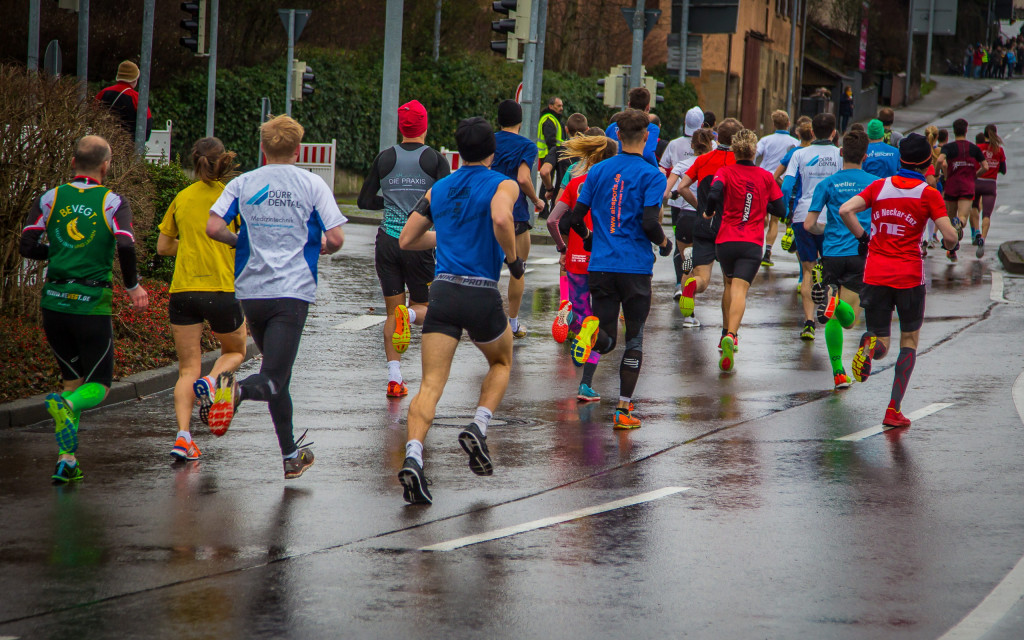Crisis of Identity
The year: 2009.
The place: Hot Topic.
The person: Me.
I gazed in reverent silence at the decidedly irreverent graphics adorning tees in a variety of colors: black, darker black, and maybe–there’s-a-tinge-of-gray-if-I-squint-my-eyes. Metal studded belts and bracelets, slogans extolling activities which would have gotten me grounded through eternity should I participate, and a healthy dose of posters with more skulls than a graveyard. It looked like the devil had dropped off his latest crop of hand me downs. And I wanted it all. I knew, in my heart, that it was me. Without the paraphernalia that shouted at me from every direction, I was like a turtle without its shell, a lion without its mane; incomplete. Hot Topic was not just selling merchandise; they were selling identity. Stepping into those red-black plaid pants was akin to stepping into myself.
An important thing to notice about this story is that, like most teenagers, I didn’t have a clear idea of what my identity was. I had to be told, through this glorious tool known as marketing. Coincidentally, there was a pre-packaged and mass produced identity lying in wait for me at Hot Topic should I only open up my wallet wide enough. While the avaricious tactic of linking identity to dollar signs is most nakedly predatory when targeted toward children and adolescents, it clearly has no boundaries: black or white; straight or gay; young or old; fitness nut or couch potato. Step out your door onto any busy street and you are immediately presented with a million different ways of being, all of them simplified, all of them streamlined, all of them tailored just for the unique you! Except, of course, they are anything but unique. Such branding is engineered to make the consumer feel special even as it undermines its own message. The true value it is peddling is belonging, becoming one of the group. Two competing needs – the need to fit in and the need to stand out – power the engine of capital forward, and the dissonance it generates in the minds of John and Jane Doe is insatiable. Consumption is an antidote to our own insecurities, our own self-directed uncertainty.
In the case of runners, specifically, everybody has a picture in their head of what that identity entails. More often than not, that picture is quite clear: slim, energetic, a morning person, a go-getter, the type to push themselves, and others, too. If you want to know how most people view the generic “runner” image, just look at the backlash – proudly displayed “0.0” bumper stickers being the most obvious example. They’re meant to say more than “I don’t run.” They say “no, I’m not one of those runner types; I’m not a health nut, I’m not a morning person, I’m okay with days spent in front of the TV rather than out on the trails, and I’m proud of that.”
Now, if you’re beginning to think “wow Vincent, you’re painting with quite a broad brush here. Sure, some of these people may be trying to say those things, but it may be different for different people” then you’re quite right. It’s intentional on my part. The point is that pre-packaged identity is powerful and dangerous because the individual doesn’t create their identity; the identity creates the individual. It compresses them into slogans and snapshots. And there is a very strong pull, and even a social incentive, to stamp out parts of yourself like bugs that don’t fit that identity, or at least to suppress them. Lines of thought are reversed. “I am a human being who runs; therefore, I create what it means to be a runner” is replaced by “I am a human being who runs; therefore, I must adapt to the identity of a runner,” as though “being a runner” were a uniform, static thing.
Let’s indulge in a hypothetical scenario. There are two women, Rachel and Hannah. The former is passionate about running, the latter about anchor-making. Rachel, in the course of her day, is met with countless opportunities to advertise her running obsession. Not only do such opportunities encourage her by making her feel that there are many other runners out there, and that she belongs to the club, but they also suggest what it means to be a runner. They combine the feel-good sensation of belonging with subtle pressure to adjust those non-”runner” behaviors and habits which Rachel has. Say Rachel doesn’t like to drink, but is bombarded with “Run Now, Wine Later,” “Will Run for Beer,” and “Where’s the Finish Wine?” (all actual designs I found online) shirts. She sees them in stores, she sees them worn by her peers, and she starts to think that maybe it’s expected of her to have a couple beers after each race. Maybe that’s just something “runners” do. Hannah, on the other hand, can find no other anchor-makers in her area and no anchor-making merchandise. She doesn’t know if anchor-makers are supposed to love or hate beer, wake up at 5 a.m. or 5 p.m., be go-getters or go-givers. In this vacuum, Hannah has no choice but to sculpt her own sense of what it means to be an anchor-maker, and, because she is doing such heavy lifting, that more specific piece of identity–the anchor-making piece–is much more likely to be integrated harmoniously into the whole–that is, what it means to be Hannah. No stomping out, no shushing or adjustments necessary.
To be clear, the danger does not lie in associating with a particular group. Indeed, the camaraderie, the understanding, the joys and challenges (and, yes, beers) that we share with our running peers are among the sport’s primary delights. There is nothing implicitly wrong with wearing “Run Now, Wine Later” shirts. The danger lies in paying the price of authenticity for acceptance, subordinating yourself to the identity and the culture that is its substrate. For we each have our own power, our own gravity. As we indulge the accepted stereotypes of identity which may not ring true for us – “all runners look like this,” “all runners wake up at 5 a.m.,” “all runners push through the pain” – we are not only betraying ourselves, but all runners, and all those who aspire to be runners. We contribute a bit more gravity, a bit more magnetism, to a mold which is too specific, and often harmful as a direct result of its specificity. We scare others away. We narrow, rather than broaden, our image of who and what a “runner” is.
Instead of letting identity walk you – like an unruly dog on a leash pulling its owner along – handle it firmly and with control. Hew out your own sense of what it means to be a runner, and, rather than subsequently imposing that sense on others, help them to discover their own. Be mindful of the times when your decisions are being guided by predefined labels and not by your own needs and journey. In setting small examples to those around us by being comfortable in our own skin and with our own choices, we can inspire a movement of individuality: one in which being a “runner” is not about what you drink at the finish line, or what shirt you wear, or how many types of shoes you own. Rather, it is about allowing, encouraging, and celebrating unique journeys of discovery – journeys in which meaning is as individual as the person who seeks it.
~Vincent Behe
Add Comment
You must be logged in to post a comment.








